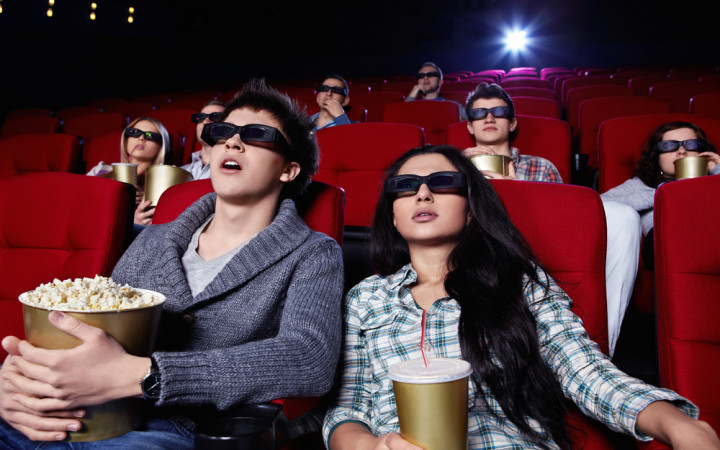Have you ever seen a 3D movie? They're pretty cool, aren't they? Did you find yourself reaching out to “touch" things that looked like they were hovering right in front of you?
3D stands for three-dimensional. “Regular" movies are 2D, or two-dimensional. What are dimensions, and what's the difference?
Dimensions are properties of space. They refer to extension in a particular direction. For example, two-dimensional (2D) images have two dimensions: length and width. Think of a picture drawn on a piece of paper. The paper has length and width.
Many things in the real world, however, have three dimensions. The third dimension is depth. Think of a cube. Not only does it have length and width, but it also has depth.
When you watch a movie, the screen is two-dimensional. It has length and width, but not depth. That's why “regular" 2D movies appear as if all the action is happening up there on the big screen.
3D movies, on the other hand, add depth and make you feel like you're part of the experience. You see cars flying toward you or snowflakes floating in the air all around you. Isn't modern technology amazing? How do they do that?
People perceive depth and see the real world in three dimensions thanks to binocular vision. No, we don't look through binoculars! But we do have two eyes that are about three inches apart.
The separation of our eyes means that each eye sees the world from a slightly different perspective. Our powerful brains take these two slightly-different images of the world and do all the necessary calculations to create a sense of depth and allow us to gauge distance.
Try these simple experiments to test your binocular vision. Hold one arm straight out in front of you with your thumb pointing up. Close one eye and stare at your thumb. Now close the other eye. What do you see? As you close one eye and then the other, you should see your thumb appear to move slightly against the background.
Think binocular vision doesn't make much of a difference? Grab a ball and ask a friend to toss it to you. Practice catching the ball a couple of times. Then, keep one eye closed and try to catch the ball. Do you notice how much harder it is to gauge distance and catch the ball?
Scientists have a fancy word for how your eyes and your brain work together to see in three dimensions. It's called stereoscopy. Stereoscopy is what modern 3D technology tries to duplicate.
There are several different types of 3D technology in use today, but they basically do the same thing. 3D movies and those silly glasses work together to send each of your eyes different perspectives of the same image.
Depending upon the exact type of technology used, the 3D glasses you wear will either use special shutters, color filters, or polarized lenses to receive the images. Your brain takes care of the rest!
For example, older (and some newer) 3D movies have to be viewed through special red and blue (sometimes red and green) glasses. Images are projected in those colors — red and blue — and the special glasses make sure each eye only receives one of the images. As always, your brain puts the 3D effect together.
Newer movies use polarized glasses that take advantage of the fact that light can be polarized, or given different orientations. Newer 3D glasses with polarized lenses don't need separate colors and can give a much more lifelike experience.
Your incredible brain does all this 3D processing automatically. It's a fantastic machine! The hardest part for 3D movie makers is getting a camera to do the same thing, so that they have the right images to send to your eyes via the movie screen.
To get a good 3D image, you have to have two versions of the same image filmed from the exact angle as your eyes would see it. To accomplish this, filmmakers use special film rigs that use two cameras bolted into position to mimic human eye position.
To make an animated movie in 3D, animators do basically the same thing. They create two versions of each individual picture to duplicate the perspective of each individual eye. Although it's easier to get perfect images, it also takes a lot of extra time to create all the extra images.




